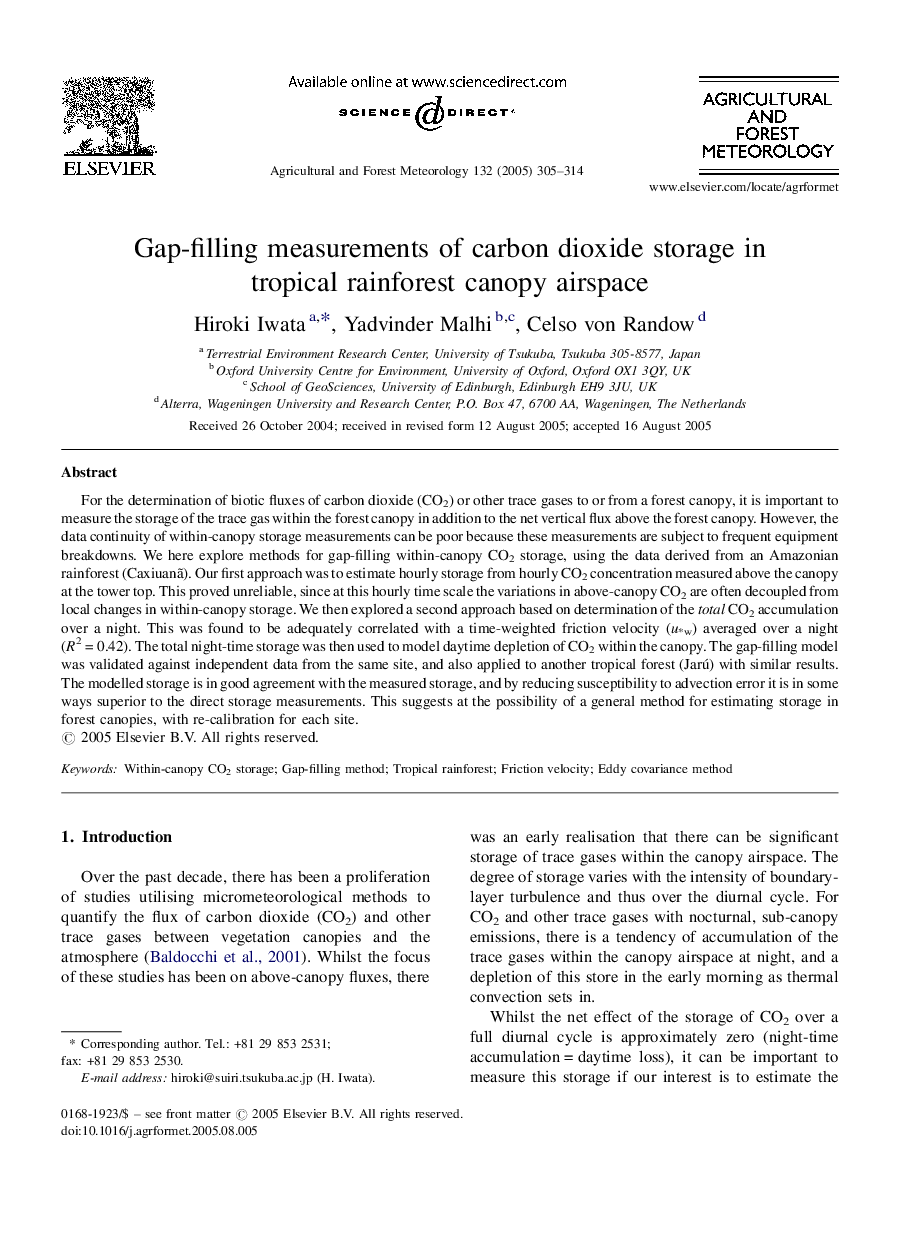| Article ID | Journal | Published Year | Pages | File Type |
|---|---|---|---|---|
| 9619451 | Agricultural and Forest Meteorology | 2005 | 10 Pages |
Abstract
For the determination of biotic fluxes of carbon dioxide (CO2) or other trace gases to or from a forest canopy, it is important to measure the storage of the trace gas within the forest canopy in addition to the net vertical flux above the forest canopy. However, the data continuity of within-canopy storage measurements can be poor because these measurements are subject to frequent equipment breakdowns. We here explore methods for gap-filling within-canopy CO2 storage, using the data derived from an Amazonian rainforest (Caxiuanã). Our first approach was to estimate hourly storage from hourly CO2 concentration measured above the canopy at the tower top. This proved unreliable, since at this hourly time scale the variations in above-canopy CO2 are often decoupled from local changes in within-canopy storage. We then explored a second approach based on determination of the total CO2 accumulation over a night. This was found to be adequately correlated with a time-weighted friction velocity (u*w) averaged over a night (R2 = 0.42). The total night-time storage was then used to model daytime depletion of CO2 within the canopy. The gap-filling model was validated against independent data from the same site, and also applied to another tropical forest (Jarú) with similar results. The modelled storage is in good agreement with the measured storage, and by reducing susceptibility to advection error it is in some ways superior to the direct storage measurements. This suggests at the possibility of a general method for estimating storage in forest canopies, with re-calibration for each site.
Related Topics
Physical Sciences and Engineering
Earth and Planetary Sciences
Atmospheric Science
Authors
Hiroki Iwata, Yadvinder Malhi, Celso von Randow,
